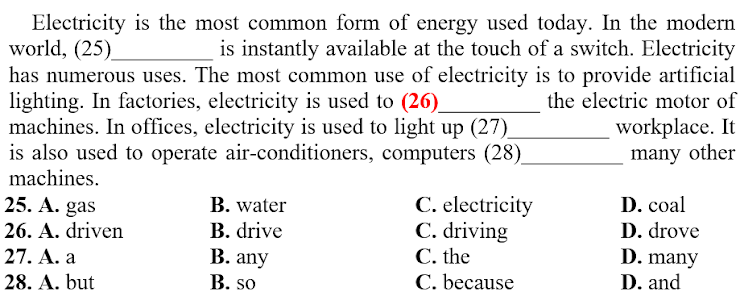Read the following passage and mark the letter A, B, C, or D on your answer sheet to indicate the correct word or phrase that best fits each of the numbered blanks from 25 to 29.
The invention of the mobile phone has undoubtedly revolutionized the way people communicate and influenced every aspect of our lives. The issue is whether this technological innovation has (25) ______ more harm than good. In order to answer the question, we must first turn to the types of consumers. Presumably, most parents (26) ______ are always worrying about their children’s safety buy mobile phones for them to track their whereabouts. We can also assume that most teenagers want mobile phones to avoid missing out on social contact. In this context, the advantages are clear. (27) ________, we cannot deny the fact that text messages have been used by bullies to intimidate fellow students. There is also (28) ________evidence that texting has affected literacy skills.
The widespread use of mobile phone has, out of question, affected adult consumers too. What employee, on the way home from work, would be reluctant to answer a call from their boss? Apparently, only 18% of us, according to a survey, are willing to switch off our mobile phones once we've left the office.
Admittedly, mobile phones can be intrusive but there are obvious benefits to possessing one. Personally speaking, they are invaluable when it comes to making social or business arrangements at short (29) _______. They also provide their owners with a sense of security in emergency situations
Điền ô 26
A. which
B. whom
C. who
D. what


Chọn C
In order to answer the question, we must first turn to the types of consumers. Presumably, most parents (26) who are always worrying about their children’s safety buy mobile phones for them to track their whereabouts.
Tạm dịch: Để trả lời câu hỏi, trước tiên chúng ta phải chuyển sang các loại người tiêu dùng. Có lẽ, hầu hết các bậc cha mẹ luôn lo lắng về sự an toàn của con cái họ mua điện thoại di động để theo dõi nơi ở của họ.
“parents” là danh từ chỉ người => chọn “who” vì “who + V” ; whom + S + V